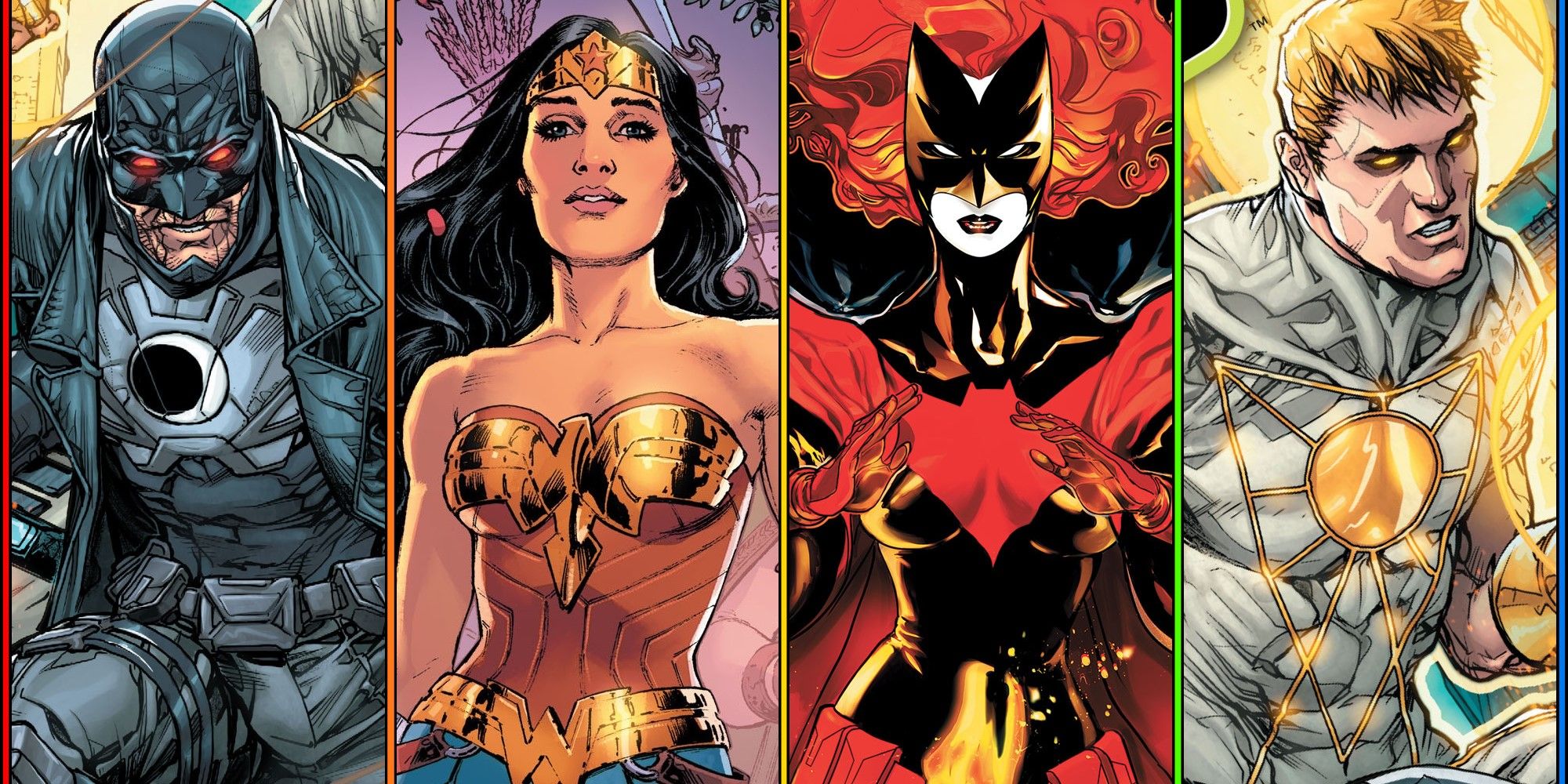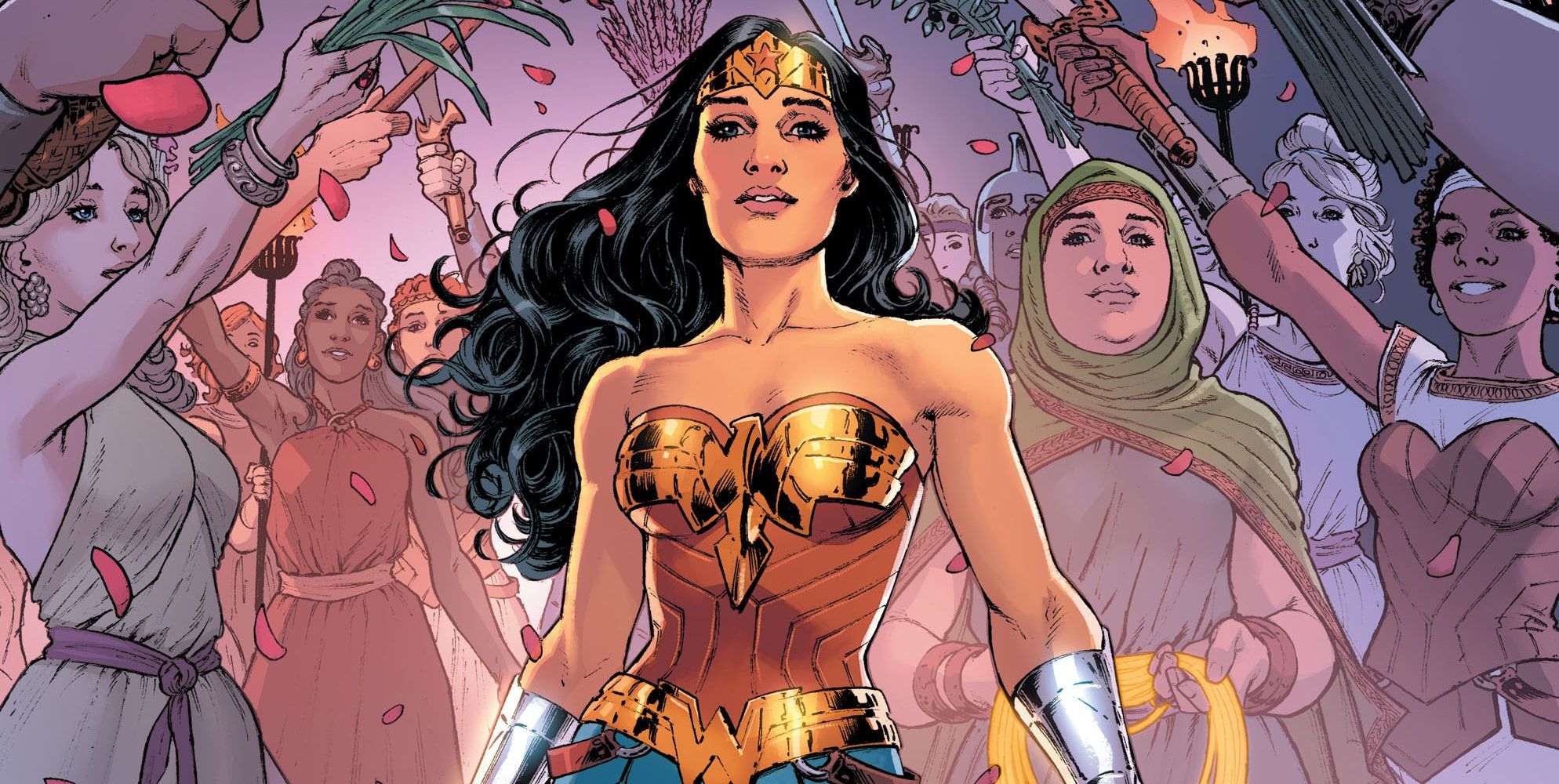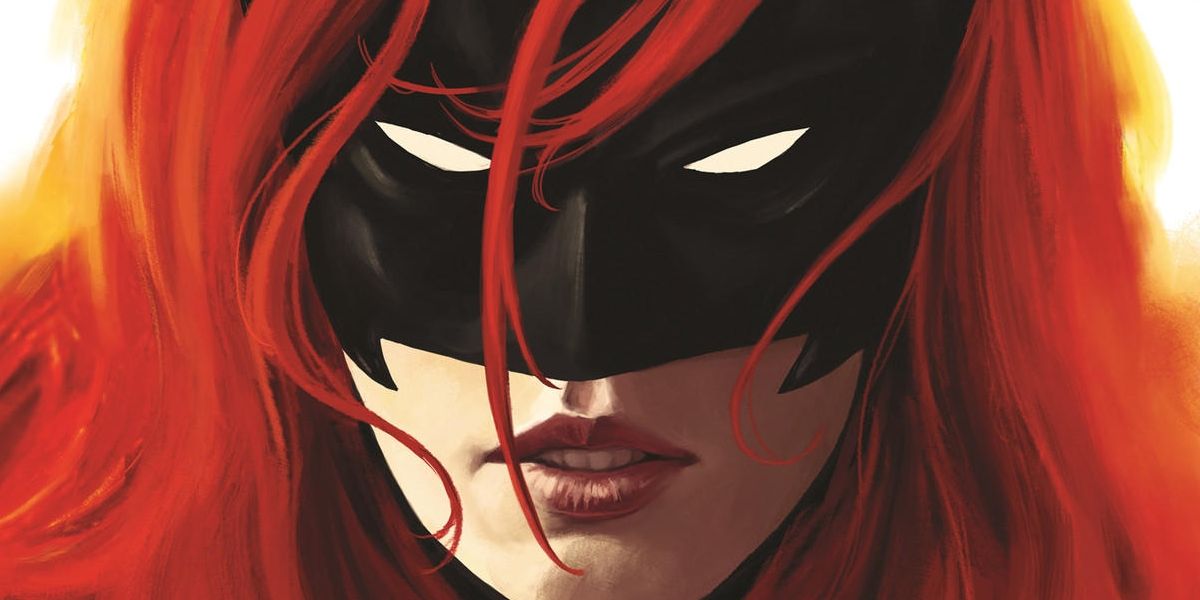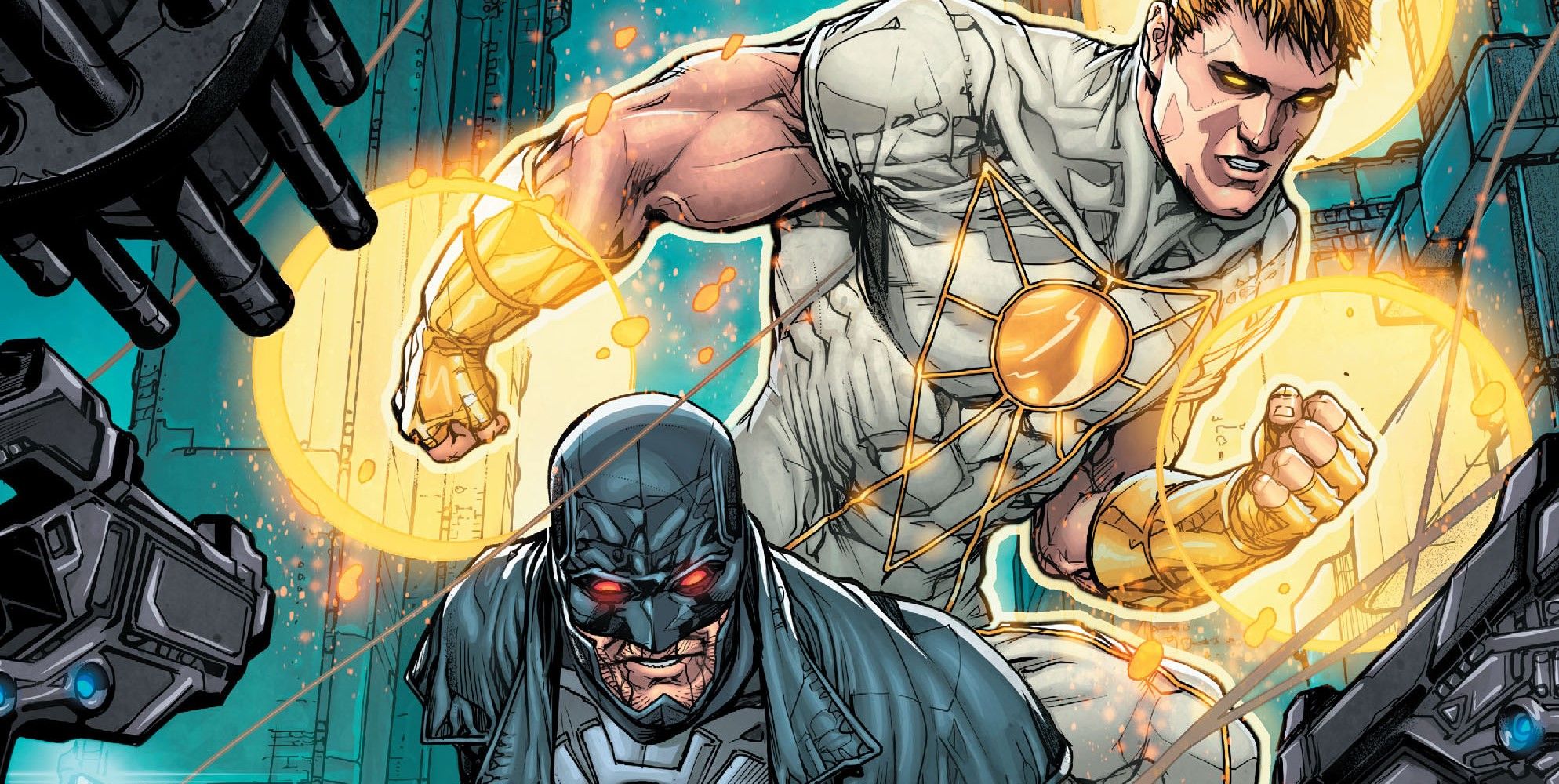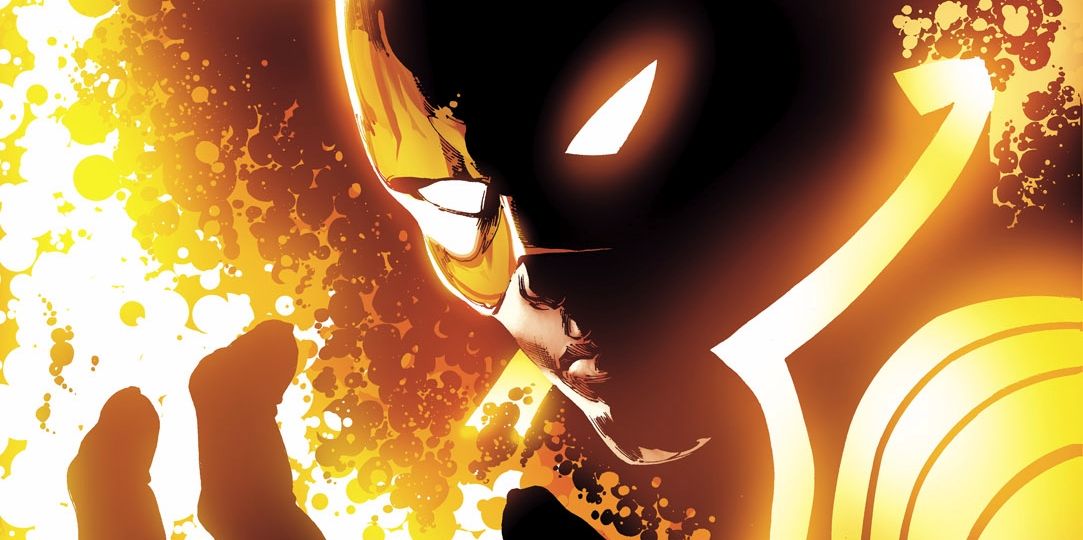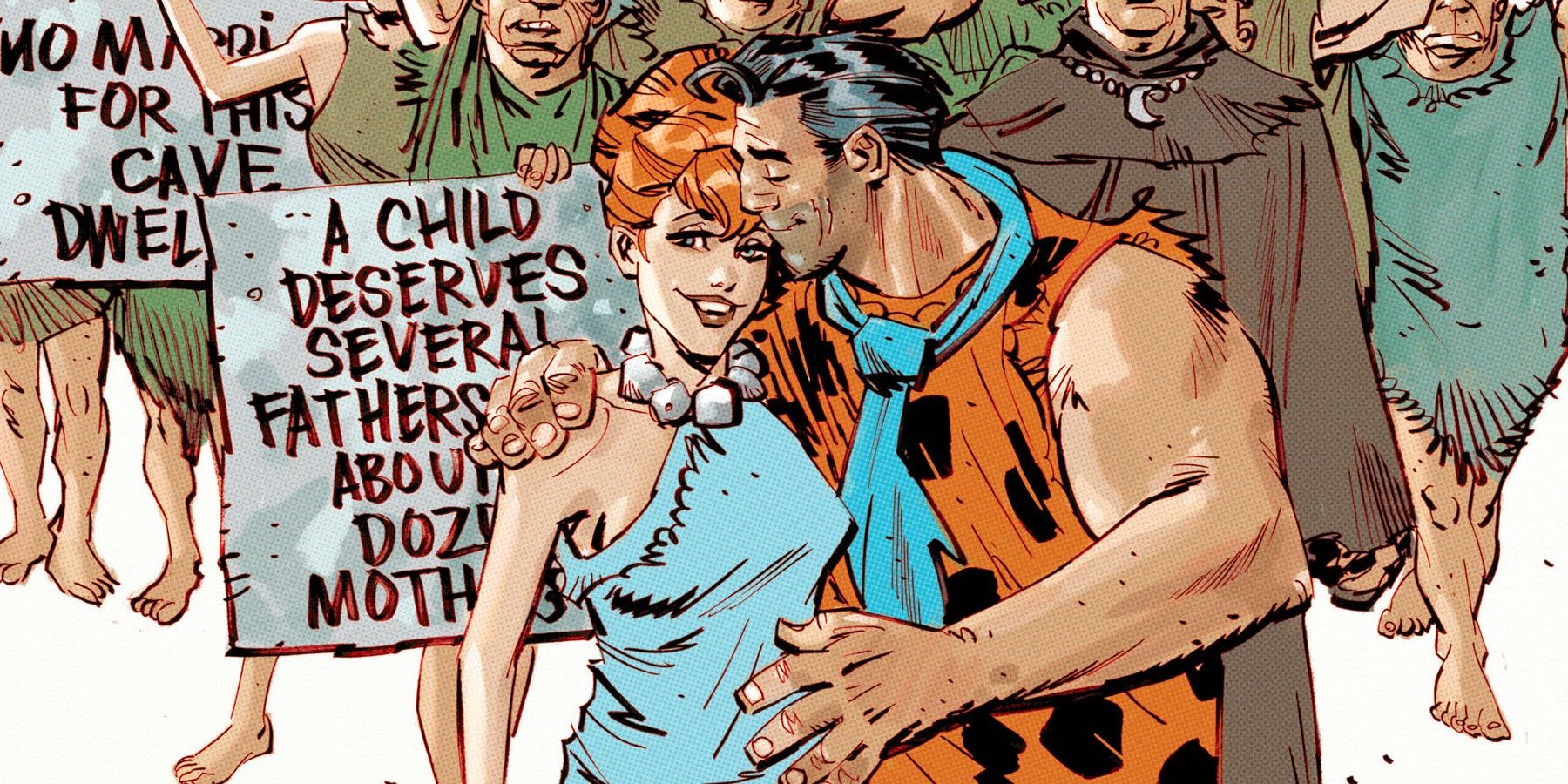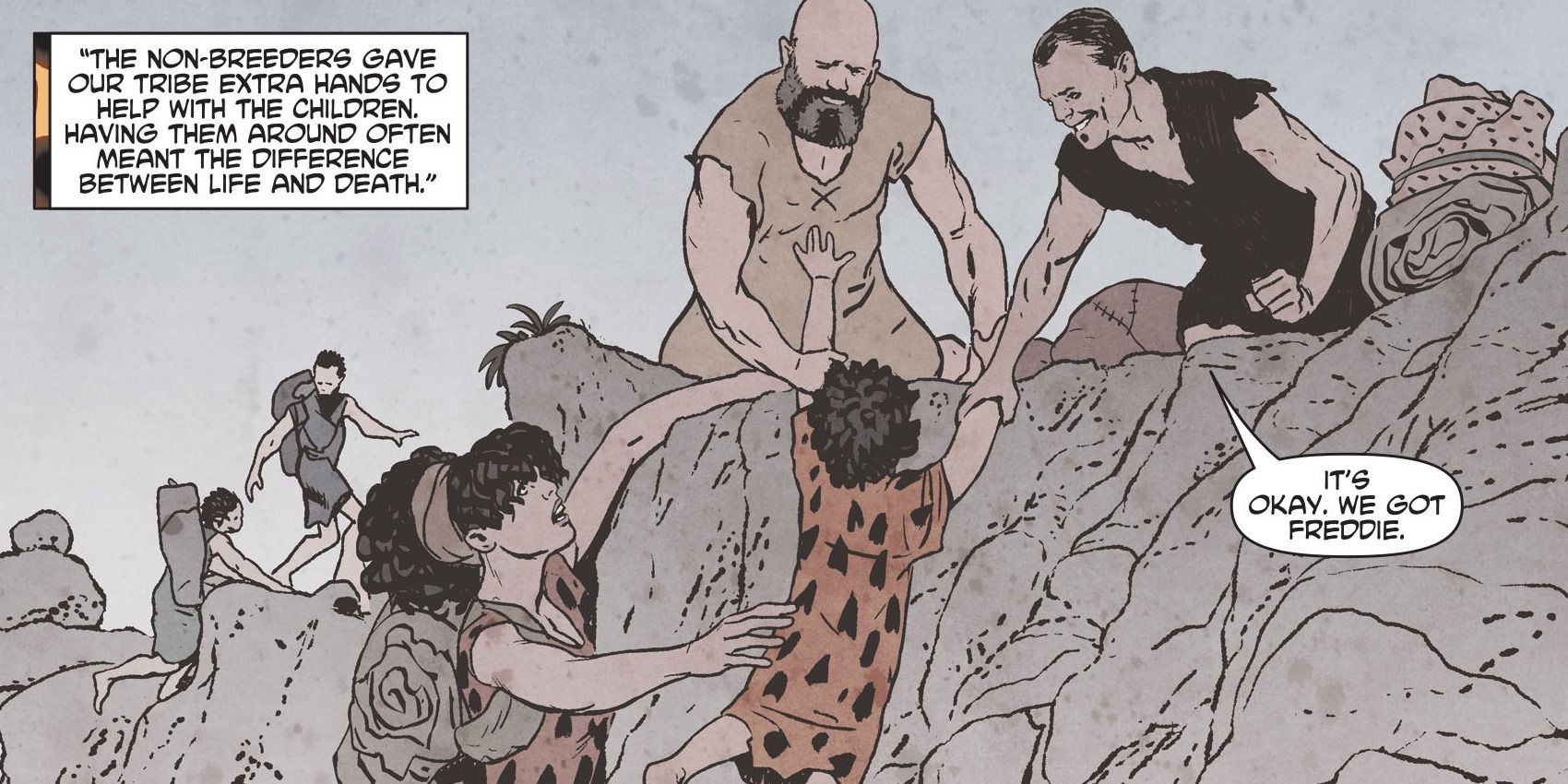While heroic tales of strong men and unstoppable women have been around since the first people gathered around campfires, it wasn't until the 1930s, when two young men crafted the idea of a super-strong man from an alien world, living among us, that the modern 'superhero' was born. In the decades since, the genre and its stars have evolved to reflect the world in which the creators lived: Superman's immigrant story gave way to wartime defenders of the weak from bullies, African-American heroes giving a voice to Black America, and minority heroes battling the political and social shifts in a post-9/11 world.
Today heroes can be any color, faith, nationality, or moral code. But when one is shown to be queer, a conversation is immediately started by those who view it as... well, something else entirely. As we mark National Coming Out Day - a day paying tribute to the courage the act can demand - major comic book publishers pursue the next evolution, depicting the same variety of identities found among their audience. It may simply be coincidence, but the day happens to arrive as DC Comics makes one fact abundantly clear: LGBTQ comic book superheroes are here to stay, and they're about to become more visible than ever before.
More visible, even - thanks to the realities of headlining superhero comics - than the creators doing the storytelling. In truth, the growing list of LGBTQ writers and artists working across DC's entire line-up is just as important to the pursuit of diversity as the sexual identities of major heroes - especially now that queer writers and writers of color are shaping characters who are neither. But it's the heroes who take the spotlight, and from Wonder Woman down to Fred and Wilma Flintstone, October 2016 may turn out to be a historic time for DC, and comics at large.
Wonder Woman
The most recent change-- actually, clarification of Wonder Woman's identity in the current DC Universe began back in July, when the heroine's "Rebirth" origin story began from writer Greg Rucka and artist Nicola Scott. The insight into Diana's romantic past was subtle (if direct), contained to a single exchange between her Amazon sisters in which her beauty was noted... along with her long list of past lovers on the all-women island. At the time, we took Rucka's implication at face value, and laid out the reasons that a lesbian, bi-sexual, pan-sexual, or queer Diana would actually improve the details of her traditional origin story (her bond to Steve Trevor is more than simple attraction).
Apparently, the updating proved a little too subtle for many, leading Rucka to outright confirm that Wonder Woman is queer. In his explanation, Rucka went on to explain that in an all-female society, the actual concept of being "gay" would have no meaning (though we'll note that the books also alludes to men and suitors in the distant past). Since it's a persuasive argument - that a society based on women loving eachother would include women loving eachother - the uproar, what there was of it, died quickly. In a way, that made the new status quo even more powerful. Yes, one of DC's 'Big Three' was not only a woman, but a queer woman... and it's kind of obvious, when you think about.
Batwoman
The months of DC's "Rebirth" initiative proved especially kind to Kate Kane, the red-haired Gotham vigilante known as Batwoman. In the pages of "Detective Comics", traditionally a Batman-led book, writer James Tynion IV instead gathered the supporting characters of the Batman Family into the spotlight. Robin was a no-brainer, but the addition of Stephanie Brown a.k.a. Spoiler and Cassandra Cain a.k.a. Orphan was praised, adding young women - one spunky, one the most deadly on the team - to create a book of personalities, and variety. And they all served under the leadership of the one person Bruce Wayne knew could train them better than he: his cousin, Kate Kane.
While Batwoman has enjoyed her own starring comics in the past, the "Rebirth" meant increased attention on what had, to that point, been DC's most high profile gay heroine (or character). The line between character and publisher was blurred when DC and IDW Publishing announced "Love is Love", a comic benefiting the victims of the Pulse Nightclub shooting in Orland, Florida, with Kate Kane proudly displayed on the cover, waving the Rainbow Flag. Tynion praised the move by the publisher (supporting not only LGBTQ characters, the community itself), but the biggest announcement was still to come.
New York Comic-Con saw the announcement of Batwoman's very own solo series, to be launched by Tynion, writer Marguerite Bennett and artist Steve Epting. Kate Kane is far from perfect, and unapologetic when it comes to the person she is, or what her sexual identity has cost her in the past. And as a result, she's getting a comic of her very own in DC's upcoming catalogue.
Midnighter & Apollo
The die-hard comic fans will be quick to inform that the heroes Midnighter and Apollo - or their relationship - is nothing new for DC. When the pair were first created by Garth Ennis and Bryan Hitch for the pages of "Worldstorm", they were obvious analogues for Batman and Superman (with more attitude). The pair survived fighting crime in secret, but it wasn't until years later that their romantic relationship was confirmed in "The Authority" - later getting married and adopting a daughter. The newer comics started that relationship over from scratch, with Midnighter even getting his own solo series (and troubled Apollo romance) from writer Steve Orlando.
The demand for the book in trade paperback proved the title was striking a bigger audience than weekly sales implied, so with "Rebirth" DC gave the green light to a brand new series, "Midnighter and Apollo" - not only reuniting the duo, but giving a gay couple a headlining comic of their own. Orlando explained in an interview with A.V. Club that it didn't arrive a moment too soon, either:
We need a book where it’s a gay couple that is facing down evil and it’s a gay couple that’s facing down hatred and violence and refuses to back down, refuses to give up in the face of all those things. We need that for everything that you mentioned. I needed that. We need that symbol that, as a community, we’re never going to back down from these things. Even in the face of hatred and death, we’re not going to be afraid. We’re going to keep going. That’s what these characters can represent and should represent and do represent.
They're not the only same-sex couple in comics, but with images of sex between men and women rare in major comics, images of sex between men are even more taboo. The first issue wasted no time, with the title heroes saving the day, enjoying a dinner group, then showing their attraction to eachother physically. While the comic skips over the sex to the afterglow, the foreplay shows that Midnighter - the rough, tough, killing fighter - takes the submissive position when the romance starts. Unexpected, but just like the other instances of LGBT+ heroes, completely true to the heart of their characters.
The Ray
There are big changes coming with DC's history of Justice-themes super teams on both the small screen and printed page. With the announcement of The Ray animated series on CW Seed, rumors swirled of a possible appearance of the same hero on Legends of Tomorrow as well (perhaps with the same actor for crossover continuity). While the details are still out on that front, October brought with it confirmation that the "Justice League of America" comic series (also written by Orlando) will be adding a new Asian-American Atom in Ryan Choi, and The Ray himself, Ray Terrill.
In the original comics, Terrill was the son of the original Ray, not using his powers until adulthood. The biggest change came with Grant Morrison and Jim Lee's "Multiversity" series "Mastermen", a series set on an alternate world where the Nazis actually won World War II. While a familiar premise, the oppressed found their heroes in The Freedom Fighters, a group of rebels who all represented ways of life or individuals that the Nazi regime wanted to eliminate. While it wasn't overtly shown in the comic, Morrison confirmed that The Ray's motivation was his homosexuality.
So, chalk up an LGBTQ member of DC's new Justice League who will also be starring in an animated series and potential Arrowverse plotlines, and Terrill's time in the spotlight is only beginning.
The Flintstones
Finally, if LGBTQ superheroes and heroines weren't the kind of analytical, satirical examinations of issues you were hoping to see in the pages of DC Comics, then "The Flintstones" may have the answer. It's a surprising solution, since it's likely that the superhero crowd may not even be aware of Mark Russell and Steve Pugh's new take on everyone's favorite Stone Age family. But with topics like consumerism, organized religion and colonialism already covered, Issue #4 sets its sights on a brand new fad sweeping into Bedrock: Marriage.
The immediate outrage voiced by some calling it a threat to decency (on the grounds that it "didn't exist when I was a kid") is obvious satire for the sake of a quick joke, but the discussion is far more complex. Especially when Fred and Wilma encounter Adam and Steve, two men whom Fred has known for almost all of his life. And if the name doesn't tip you off, Russell is hitting this issue head on.
The story's conflict escalates quickly, with angry mobs demanding that if men and women are allowed to marry - not be raised by the village, as was the old custom - then where does the slippery slope head next? Again, regardless of your stance on the role of marriage in modern society, it succeeds as satire should, by shifting the context and details to make the argument in a more direct, obvious, and compelling way. But it falls to Fred - once he's done voicing his own reservations about the actual significance of marriage - to characterize the place of same-sex relationships in prehistoric Bedrock.
Referring to Adam and Steve as 'non-breeders,' Fred explains how they (and, presumably, other same-sex couples) aided in the care of the village and its children. The idea of sexuality is never even raised, presenting Adam and Steve on the exact same level as any other old, young, or middle-aged couple in the comic. Adam and Steve eventually decide to give this "marriage" thing a try, only to be met with the usual reservations - if you can't breed, what's the point of marriage? Fred and Wilma decide against it, while the men choose to be married by the Unitarians, instead.
There aren't many times that Fred Flintstone is the voice of tolerance, understanding, and compassion for his fellow man, but in stripping away the structures and social history of gay marriage, or marriage in general, Russell and Pugh deliver a persuasive, intelligent, and above all funny look at adebate that is often none of those things. And as we've shown above, it just so happens to hit store shelves along several other comics making the same case: LGBTQ is a reality of today's world, and DC Comics is reflecting that fact wherever it makes sense.
-
They aren't the only publisher making a push for progress, with IDW, Image, Marvel, Dark Horse, and countless other independent publishers embracing LGBTQ creators, storytellers, and characters. But for those following the news focused on DC Comics and its many entertainment channels, the past few weeks have seemed a 'coming out' party for mainstream comics. The immediate result is a wider variety of talented storytellers and series - and it doesn't look to be stopping any time soon.
Wonder Woman, Detective Comics, Midnighter and Apollo, and The Flintstones are on available now.
Source: A.V. Club

